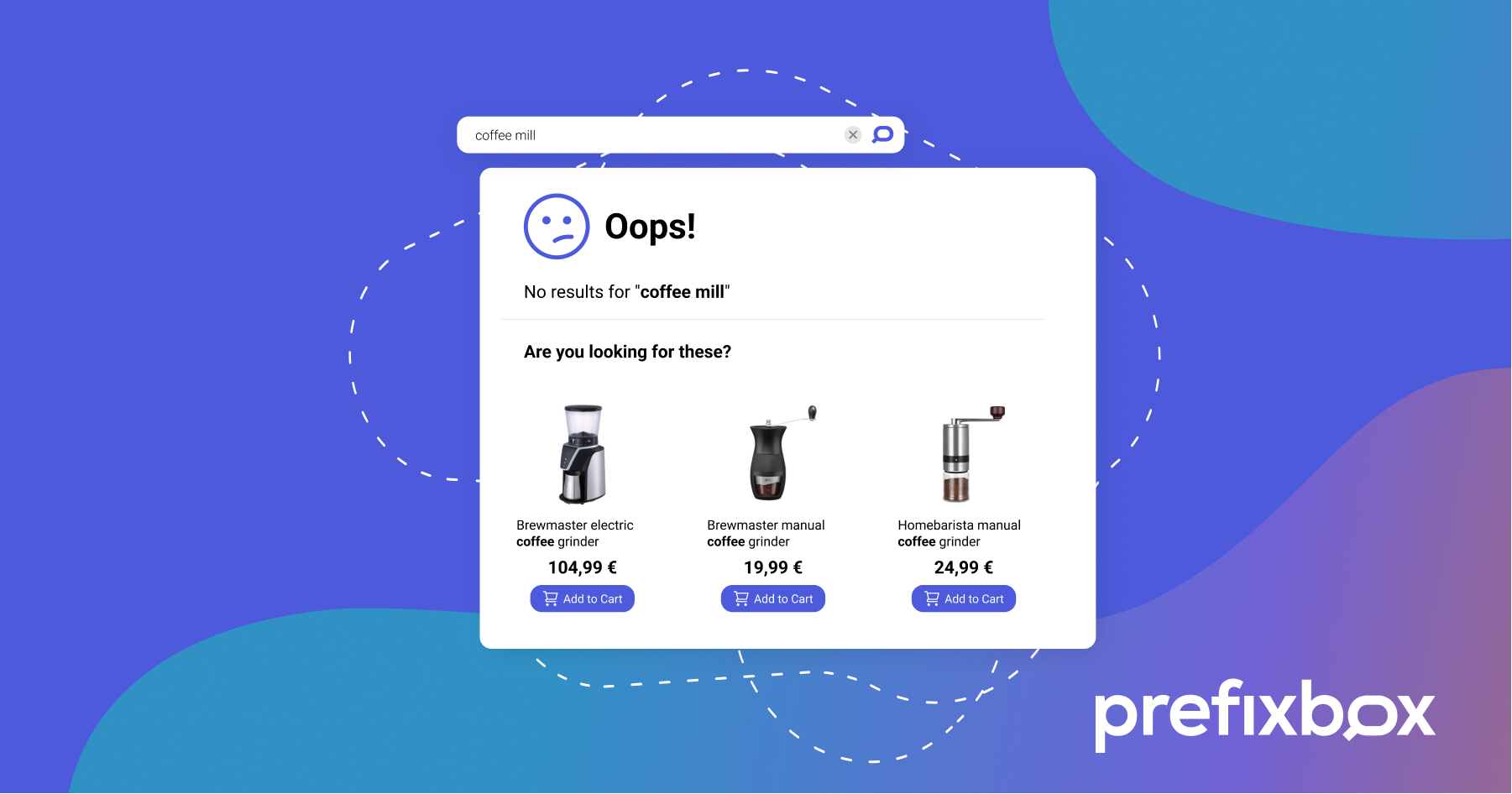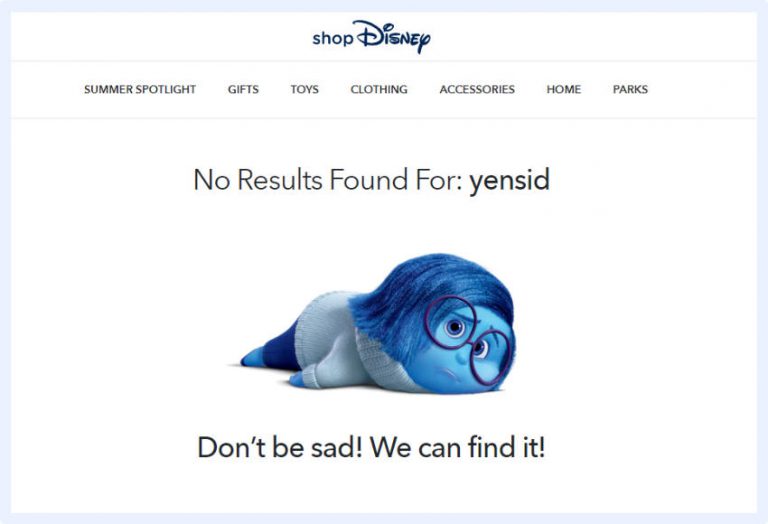Have you ever typed a search query into your favorite online store, brimming with anticipation, only to be met with the dreaded "no results" page? This seemingly innocuous dead end can be a silent killer of conversions, a frustrating roadblock standing between a shopper and a completed purchase.
The impact of a poorly designed, or worse, a completely neglected "no results" page can be far-reaching. It's not just about losing that one potential sale; it's about the overall user experience and the lasting impression it leaves on your brand. A customer encountering such a page might feel abandoned, their intent to purchase thwarted, leading them straight into the welcoming arms of your competitors. Instead of passively accepting these lost opportunities, businesses must proactively address the "no results" page, transforming it from a point of frustration into a strategic touchpoint.
| Topic | Description |
|---|---|
| Definition of No Results Page | A page displayed when a search query yields no matching results on a website. |
| Impact on User Experience | Can lead to frustration, abandonment, and a negative perception of the website. |
| Conversion Rate Impact | High bounce rates and lost sales opportunities. |
| Importance of Optimization | Turning a potential negative into a positive by guiding users to relevant content or products. |
| Key Strategies for Improvement |
|
| Advanced Techniques |
|
| Search Solutions | Using robust search engines like Algolia to anticipate user needs and prevent "no results" pages. |
| Examples of Good No Results Pages | Showcasing best practices in design and functionality. |
| Link to Authentic Website | Nielsen Norman Group - No Results Page |
It all starts with acknowledging the problem. The default "no results" page, often a sterile and unhelpful message, signals to the user that their journey has come to an abrupt end. The first step in crafting an effective "no results" experience is to genuinely apologize. A simple, empathetic message acknowledging the user's unsuccessful search can go a long way in mitigating frustration. Something along the lines of, "We're sorry, we couldn't find what you were looking for," sets a more positive tone and opens the door for further engagement.
- Michele Decesare Unveiling The Sopranos Star Beyond
- Philip Oakey The Human League A Deep Dive Into 80s Synthpop
However, an apology alone is insufficient. The key lies in offering viable alternatives. Instead of simply stating that nothing was found, the page should actively guide the user toward potentially relevant content or products. This can be achieved through several strategic approaches. One of the most effective is providing alternative search suggestions. Based on the user's initial query, the system can offer related keywords or categories that might lead to a successful search. For instance, if a user searches for "blue suede shoes" and no exact matches are found, the system could suggest "blue shoes," "suede shoes," or "men's footwear."
Spell check functionality is another crucial element in optimizing the "no results" page. Typos are a common occurrence, and even a minor misspelling can lead to a failed search. Implementing an automatic spell check feature that suggests the correct spelling of the user's query can instantly redirect them to the desired results. This not only saves time and frustration but also demonstrates the website's attention to detail and commitment to user assistance. Furthermore, suggesting similar products or categories can broaden the user's search and increase the chances of finding something they are interested in. If the initial search for a specific brand of laptop yields no results, the page could display similar laptops from other brands or suggest the broader category of "laptops."
Beyond practical solutions, engaging the shopper with relevant and compelling content can transform the "no results" page into a valuable marketing opportunity. Instead of simply presenting a list of alternatives, consider incorporating visually appealing product recommendations, special offers, or links to popular blog posts. This not only keeps the user engaged but also exposes them to other products and services that they might not have otherwise discovered. For example, an online clothing retailer could display a curated collection of new arrivals or trending items on the "no results" page, enticing the user to explore different options.
- Somali Wasmo Channels Groups Find What Youre Looking For Now
- Master Ssh On Raspberry Pi Free Download Remote Iot Guide
To truly excel in search experience, many businesses are turning to more sophisticated solutions like Algolia. These robust search engines utilize advanced algorithms and machine learning to anticipate user needs and ensure that every user is on a path to content discovery. By analyzing user behavior, search history, and product data, Algolia can provide highly relevant and personalized search results, even when the initial query is vague or incomplete. This proactive approach significantly reduces the likelihood of encountering a "no results" page, creating a seamless and intuitive shopping experience.
Consider these three examples of search experiences that effectively eliminate the need for a traditional "no results" page. First, imagine a user searching for "red dress" on an online fashion retailer. Instead of displaying a "no results" page if no exact matches are found, the system could automatically suggest "red dresses," "burgundy dresses," or "dresses in red tones." It might also display a selection of popular red dresses, even if they don't perfectly match the initial query. This proactive approach keeps the user engaged and encourages them to explore different options.
Second, consider a user searching for a specific model of digital camera on an electronics retailer. If the model is out of stock or discontinued, the system could display a list of similar cameras with comparable features and specifications. It might also include customer reviews and ratings to help the user make an informed decision. This provides a valuable service to the user and helps them find a suitable alternative.
Third, imagine a user searching for a specific book on an online bookstore. If the book is not available, the system could suggest similar books by the same author or in the same genre. It might also display a list of related books that other customers have purchased. This provides a wealth of relevant information and encourages the user to continue browsing.
Even the most sophisticated search solutions can sometimes fail to deliver the desired results. In such cases, it's crucial to have a well-designed "no results" page that provides clear and helpful guidance. Beyond the basics of apologizing and offering alternatives, consider incorporating the following best practices. Implement autocomplete with a twist. Instead of simply suggesting complete search terms, the autocomplete feature can also display related products or categories as the user types. This can help guide the user toward the desired results even before they finish typing their query.
Always offer another way forward. The "no results" page should never be a dead end. Provide clear and prominent links to the website's homepage, popular product categories, or customer support resources. This ensures that the user can easily navigate to other areas of the site and find the information or assistance they need.
To further optimize the search experience, businesses should leverage the power of analytics. By tracking user search queries, click-through rates, and conversion rates, they can gain valuable insights into what users are looking for and how they are interacting with the website's search functionality. This data can be used to identify areas for improvement and to refine the search algorithms to deliver more relevant and accurate results.
For example, if a large number of users are searching for a particular product that is not currently available on the website, this could indicate a potential market opportunity. The business could consider adding the product to its inventory to meet the demand. Similarly, if users are frequently misspelling a particular search term, the spell check functionality can be updated to automatically correct the misspelling and redirect the user to the correct results.
However, search functionality isn't limited to just e-commerce websites. Consider a user trying to sign out of their account on the Edge browser, only to find that the action yields no results. This technical glitch, as reported by some users, can be frustrating. A potential solution offered is to try signing in with a different account to see if the issue persists. If the alternative account works, the problem likely lies with the primary account's settings or cached data. In such cases, clearing the browser's cache and cookies, or resetting the browser settings, might resolve the issue.
Similarly, consider a scenario where a database query returns no results, even though the user knows that there should be matching records. This can be a common issue in database management and often stems from incorrect query syntax, data inconsistencies, or permission problems. For instance, in SQL, the statement "SET NOCOUNT ON;" can be added to the beginning of an anonymous code block to suppress the record count values generated by DML statements, allowing the result set to be retrieved directly. This can be particularly useful when dealing with complex queries that involve multiple tables and subqueries.
Sometimes, the issue lies not in the absence of data but in the timing of the query execution. In other words, the code might be working as it should, but it's printing "no results" before the query has actually been triggered and evaluated. To avoid this, the code needs to be modified to wait until the query has been fully executed before displaying the results. This can be achieved through asynchronous programming techniques or by using callback functions.
Furthermore, understanding the search inspector is crucial for troubleshooting search-related issues. The search inspector provides detailed information about the search process, including the queries that were executed, the data that was retrieved, and any errors that occurred. This information can be invaluable in identifying the root cause of a problem and developing a solution.
In the context of LINQ (Language Integrated Query), the error message "Enumeration yielded no results" indicates that the query did not return any elements. This can be caused by a variety of factors, such as an empty data source, a filtering condition that excludes all elements, or an incorrect query syntax. To resolve this issue, it's important to carefully examine the query and the data source to identify the cause of the error. Adding debugging statements or using a debugger can help pinpoint the exact location where the error is occurring.
In many cases, the perception of "no results" can be misleading. It might simply be that the user is expending effort that yields no tangible outcomes. In such cases, the expression "beating a dead horse" is often used to describe the futility of the effort. This idiom highlights the importance of recognizing when a particular approach is not working and of being willing to try a different strategy.
The issue of "no results" is not limited to online stores and software applications. It can also occur in operating systems like Windows 11. If the Windows 11 search feature is not working and doesn't show any results, this can be a major inconvenience. The problem has been widely reported by customers since the release of Windows 11 and can be caused by a variety of factors, such as corrupted index files, disabled search services, or software conflicts. To fix the problem, users can try restarting the Windows Search service, rebuilding the search index, or running the System File Checker tool.
Ultimately, the key to avoiding "no results" pages is to focus on optimizing the search experience at every stage of the user journey. This includes implementing autocomplete with a twist, always offering another way forward, and leveraging the power of analytics to continuously improve the search algorithms. By taking these steps, businesses can transform the "no results" page from a point of frustration into a valuable opportunity to engage with customers and drive sales. Stop no results pages before they happen.
Another aspect to consider is the presentation of results, or lack thereof, in various scenarios such as live lottery results. Services providing live 4D results for Magnum 4D, Sports Toto, Damacai 1+3D, Sabah 4D, CashSweep 4D, Sandakan 4D, and Singapore 4D must ensure accuracy and timely updates. Even if there's no winning result for a specific search, clear communication about the draw timings and alternative options is essential.
Similarly, lottery results for Lotto, Lotto Plus 1, and Lotto Plus 2 require regular updates and a user-friendly interface. Providing a search form to check previous results, as NLCB (National Lottery Control Board) does, is a practical approach. The clarity in presenting matching winning numbers and corresponding prizes is crucial for user satisfaction.
In other contexts, such as email clients like Outlook, troubleshooting search issues is paramount. When Outlook search isn't working and returns no results, incomplete results, or fails to find older emails, it can severely impact productivity. Solutions often involve rebuilding the search index, verifying Outlook's indexing options, or repairing the Outlook data files.
The underlying principle is consistent across diverse platforms: anticipate user needs, provide alternatives, and ensure a seamless, informative experience even when the immediate search yields no direct matches. This proactive and user-centric approach transforms potential frustration into an opportunity for engagement and customer loyalty.



Detail Author:
- Name : Prof. Sigrid Wuckert IV
- Username : carmel.herzog
- Email : kihn.jarrell@langosh.com
- Birthdate : 1971-05-12
- Address : 822 Lang Extensions Apt. 938 New Sadye, ME 24504-3903
- Phone : 1-430-757-5317
- Company : Gottlieb Ltd
- Job : Logging Equipment Operator
- Bio : Eveniet et doloribus ut praesentium omnis animi quod quos. Tempora suscipit corrupti esse. Maiores et est est sapiente.
Socials
tiktok:
- url : https://tiktok.com/@electa_rice
- username : electa_rice
- bio : Consequatur beatae quis quod placeat laborum.
- followers : 2141
- following : 1659
instagram:
- url : https://instagram.com/electa.rice
- username : electa.rice
- bio : Voluptatem sit eos iure maiores. Est fugiat enim aliquid sapiente quo et. Et impedit ad earum.
- followers : 3492
- following : 2462